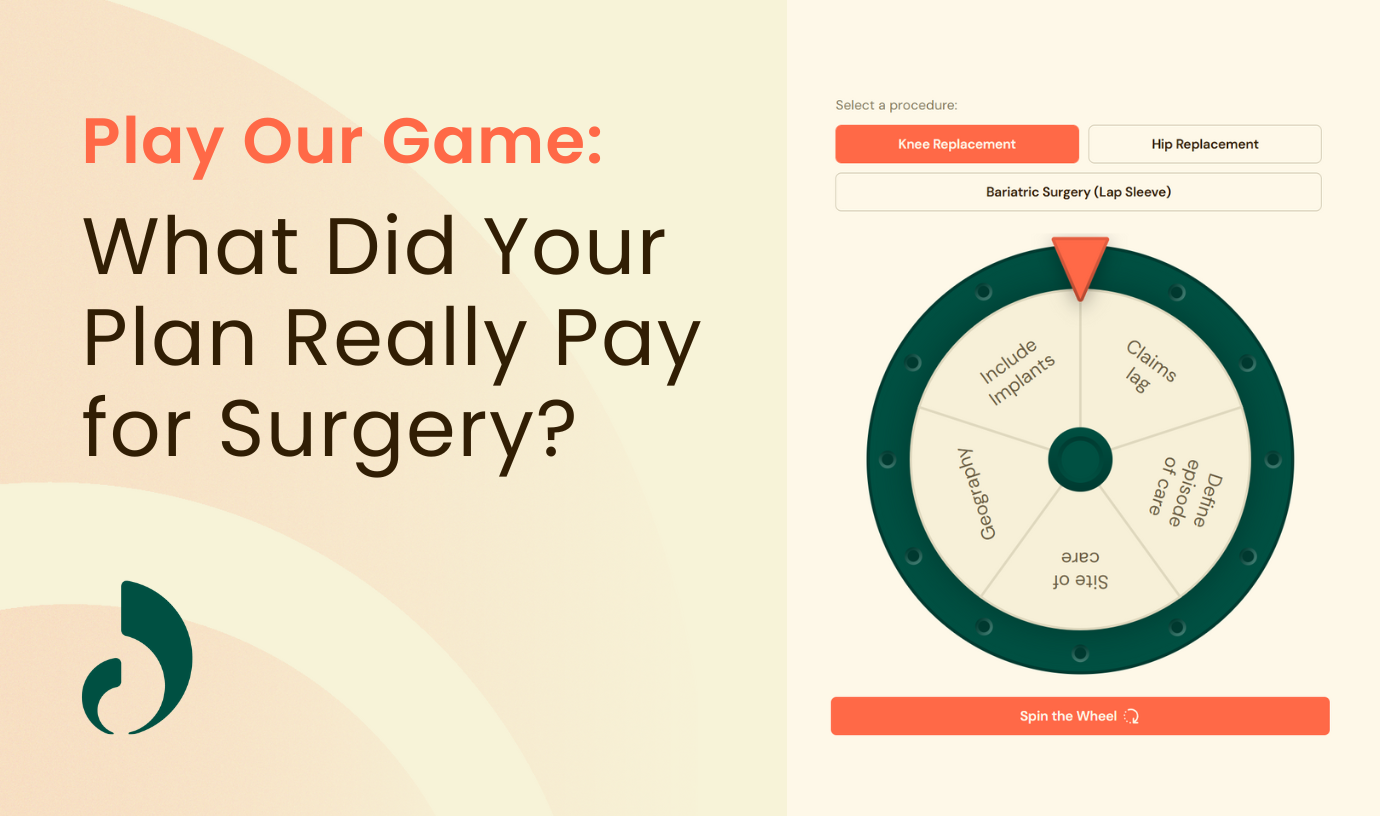Employers turn to Centers of Excellence (COEs) to improve outcomes and keep high-cost claims in check, especially for complex or high-volume procedures.
The COE model is simple: Guide employees to top-performing providers who consistently deliver high-quality care, strong outcomes and a better overall experience.
While COEs traditionally focused on surgeries like joint replacements and bariatric procedures, the scope is quickly expanding to include thousands of procedures—and even complex conditions like cancer.
As COEs gain traction, employers face an important decision: Stick with a health plan’s COE network or explore an independent COE specialty care solution like Lantern. Knowing how these options differ can help you build a benefits strategy that meets your employees’ needs and protects your bottom line.
What Is an Independent Center of Excellence in Healthcare?
Independent COEs come from third-party vendors that operate outside your health plan, giving you more control and clarity. These vendors typically use tougher, more transparent criteria to choose top-performing providers and let you shape the program to fit your goals. Independent COEs can give employers greater control over pricing, quality standards and member navigation.
“Employers are interested in independent COEs because they’ve come the closest to solving the value equation when it comes to quality, delivery, experience and cost,” says Brian Marcotte, Business Group on Health Past President and a current advisor to health tech and health solution companies.
Lantern, for example, lowers costs by hand-picking high-performing providers and directing members to local facilities. This targeted approach enables them to negotiate rates that are often 50% lower than those offered by large health plans. This allows employers to pass the savings on to the employee, typically by waiving cost share but collecting the IRS minimum for high-deductible health plans.
Employers are interested in independent COEs because they’ve come the closest to solving the value equation when it comes to quality, delivery, experience and cost.
How Are Independent COEs Different From Health Plan COEs?
Health plan COEs are networks curated by insurance carriers. These programs are often built into the existing health plan, which can make implementation easier. However, the network is limited to providers contracted with the insurer, and employers may have little insight into how the COE vets providers or measures quality.
Independent COEs typically offer a more white-glove experience to guide members through complex procedures—from pre-authorization and appointment scheduling to post-op follow-up. Independent COEs like Lantern include dedicated Care Advocates who help employees feel supported and informed throughout their care journey.
Health plan COEs, by contrast, often rely on broader call center support or general plan resources, which can lead to a more fragmented or less personalized experience. While some carriers are improving their support models, they rarely match the high-touch service independent vendors provide.
“Most health plans have a low NPS score,” Marcotte says. “If I look at Lantern’s NPS, it’s 85. And so that delivery of care element that stands alone in the market is more of a trusted resource when it comes to care delivery. That’s another reason employers are attracted to the independent COE model.”
Lantern’s independent approach to specialty care focuses on vetting individual surgeons based on factors like subspecialization, board certification, fellowship training, procedure volume and appropriateness of care, in addition to evaluating the facilities where they operate.
“Knowing that there’s this long list of quality indicators that Lantern vets out on behalf of an employee health plan really helps the decision for us to be much more comfortable with sending participants to Lantern,” says Kim Baker, Senior Advisor at Phillips 66.
Lantern’s data shows 30% of members avoid unnecessary surgeries, and those who do have surgery experience better outcomes and faster recovery times.
Independent COEs Offer Wide Coverage
Health plan COE networks are often contained to large population centers, requiring members to travel long distances for specialty care. Lantern’s independent model contracts directly with local hospitals, Ambulatory Surgical Centers and other facilities to expand access and make care local.
With Lantern’s nationwide COE network, 80% of members drive 50 miles or less for care, and 98% of members live within a day’s drive.
“We really wanted a strong local network,” says Dawn Beaudin, Vice President, Benefits at Hyatt. “One of the reasons we felt comfortable introducing Lantern was that over 80% of our colleagues were within driving distance of a Lantern-affiliated surgeon.”
How Hyatt Makes Care Affordable While Lowering Costs

Which COE Model Is Right for My Organization?
The right fit depends on your goals. Understanding the tradeoffs can help you build a more effective and personalized specialty care strategy.
| Feature | Independent COEs | Health Plan COEs |
| Provider Selection | More transparent and customizable. Vendors often use rigorous, evidence-based criteria | Limited to the carrier’s contracted network and the criteria may be opaque |
| Pricing Model | Typically uses bundled payments for cost predictability and savings | May use traditional fee-for-service pricing |
| Flexibility | Highly configurable to employer needs and priorities | Standardized by health plan with limited customization |
| Employee Experience | Often includes white-glove navigation and care advocacy | Varies by plan and may rely on broader customer service channels |
| Reporting & Insights | Detailed, employer-facing data on utilization, outcomes and ROI | Reporting may be tied to broader plan metrics |
| Ease of Implementation | May require separate contracts or integration with plan | Easier to implement within existing health plan structure |
How Can Independent COEs and Health Plans Work Together?
Independent COEs and health plans don’t have to operate in silos. In fact, when they work together, employers can unlock the best of both worlds — high-quality care with a seamless member experience.
“Employers want better integration with their health plans, with their pharmacy benefit managers and with their navigation solutions,” Marcotte says. “There’s a real opportunity here for health plans to step in and play a contracting role.”
By integrating an independent COE into the health plan, employers avoid adding yet another point solution. Instead of juggling separate contracts and vendors, they can activate the COE through their health plan and focus their time on communication, plan design and employee engagement.
“There’s a real opportunity here to consolidate point solutions, to drive better integration and to break some of that fragmentation we’ve exacerbated by offering so many solutions in the market,” Marcotte says.
Partnerships between independent COEs and health plans also open the door to data sharing. When a COE shares insights back with the health plan, it creates a more complete view of the member’s health, especially for those managing comorbidities like diabetes or heart disease. That coordination helps connect members to other resources in the health plan, supports better outcomes and builds a more integrated continuum of care.
“We’re working with Lantern to actually pull in claims information that is helping us to proactively identify, based on procedure codes, people who might be having physical therapy or might have gone to see an orthopedist recently,” Beaudin says. “And we’re doing some targeted communications to those groups.”
Choosing the Right COE Partner
Independent COEs and health plan COEs each bring different strengths to the table. Benefits leaders should take time to evaluate their organization’s needs, review provider quality standards and consider how each option supports both cost savings and member experience.
With the right approach and the right partner, you can build a specialty care strategy that delivers lasting impact for your people and your plan.
Lantern has developed partnerships with several well-known health plans, which makes contracting easy.





